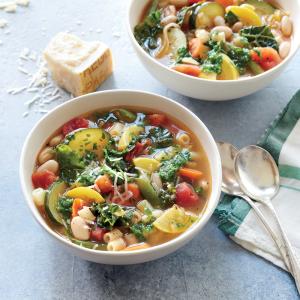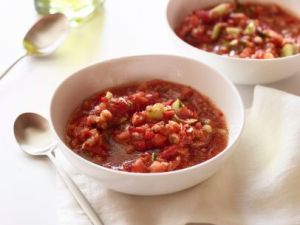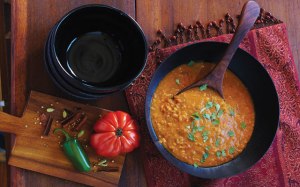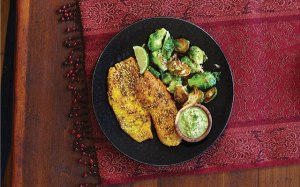Fall is the perfect time for soup. If there are vegetables in this recipe that you don’t like, simple omit them. Add others that you like! Utterly delicious, healthy and hearty!
2 tablespoons olive oil
2 cups thinly sliced leek, white and light green parts only (about 2 leeks)
1 cup thinly sliced carrot
1 cup thinly sliced celery
2 large garlic cloves, minced
2 tablespoons tomato paste
8 cups low-sodium chicken stock
1 (14.5-ounce) can diced tomatoes, undrained
1 (14.5-ounce) can cannellini beans, rinsed, drained, and divided
2 cups chopped yellow squash
2 cups chopped zucchini
1 cup chopped red bell pepper
1 cup fresh green beans, cut into 1-inch pieces
½ cup uncooked ditalini pasta
½ teaspoon kosher salt
½ teaspoon black pepper
5 ounces kale, stemmed and chopped
homemade pesto (or a high quality, refrigerated pesto)
Parmesan cheese, grated
directions
Heat a large Dutch oven over medium heat. Add oil; swirl to coat. Add the leek, carrot, celery, and garlic; cover and cook for 5 minutes, stirring occasionally (do not brown). Add tomato paste; cook for 2 minutes, stirring constantly. Add the stock and tomatoes; bring to a boil. Reduce the heat to low, and simmer 15 minutes.
Place 1 cup cannellini beans in a small bowl; mash with a fork. Add the mashed beans, remaining cannellini beans, squashes, bell pepper, green beans, pasta, salt, and black pepper to the pan. Increase the heat to medium; cook for 10 minutes. Stir in the kale; cook for 2 minutes.
Divide the soup into bowls. Top each serving with 1 1/2 teaspoons of pesto and sprinkle with grated Parmesan cheese.
(Adapted from a recipe found in Cooking Light, August, 2015)




